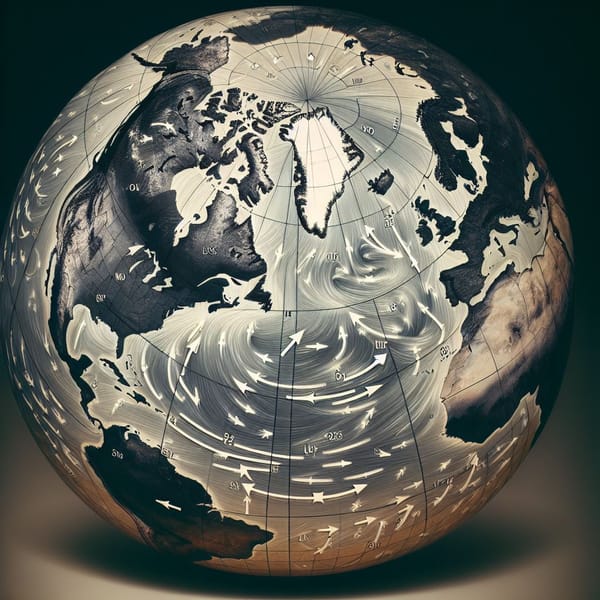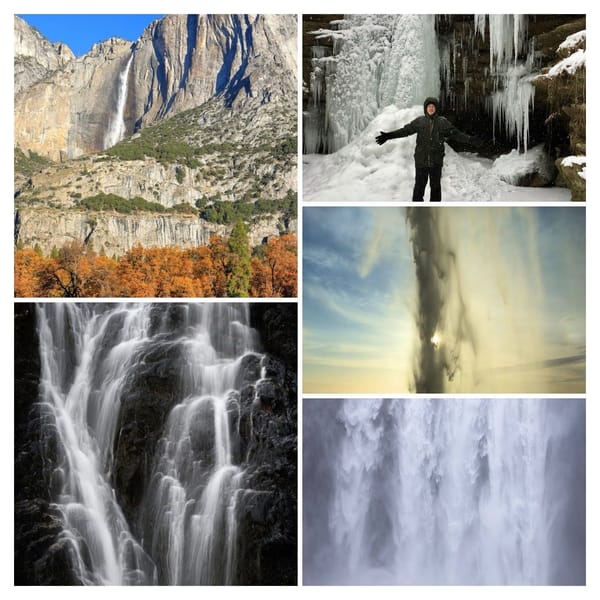Featured Meteorologist Robert Santos
Robert, Chief Meteorologist at Spectrum News 1 LA, shares his journey from witnessing typhoons in Guam to becoming a seasoned weathercaster across various U.S. cities.

Robert is Chief Meteorologist at Spectrum News 1 SoCal
You can find Robert on Instagram or Follow him on Twitter/X
Can you tell us a bit about your background and what inspired you to become a meteorologist?
I first became fascinated by weather while witnessing typhoons as a kid growing up on the Pacific island of Guam. Then, in middle and high school, I developed a desire to become a TV news journalist. After graduating, I landed my first job in TV news in Guam. During this time, I covered my first super typhoon with winds in excess of 150 mph. I served as the assignment manager, producer and anchor that day. At one point, as strong winds shook our satellite dishes over our station’s rooftop, we had to evacuate the TV station and make a dash for our sister radio station, where I anchored the news all night long. We continued reporting for days after the storm passed to keep the entire island informed. This experience confirmed how important the media’s role is in our society.
For my first decade in the news business, I was a general assignment reporter. My entry into the world of weather began while working in San Diego, where a competing station offered me a job as a weekend weathercaster. Eventually, I forecasted the weather in Las Vegas and Seattle before returning to Southern California. During my time in the Pacific Northwest, I decided to take a deeper dive into weather by enrolling in Mississippi State University’s Broadcast Meteorology Program.
What has been the most challenging weather event you’ve covered in your career?
Having lived in various climates from the Pacific Northwest to the Desert Southwest and California, I’ve experienced extreme heat, extreme cold, record flooding rainfall and devastating wildfires. But if I have to choose one challenging weather event, I’d pick my first major snowstorm, which swept through Seattle just before the afternoon rush hour during the winter of 2008. I was filling in during the weekday afternoon and evening newscasts. The storm dumped record amounts of snowfall, stranding thousands of drivers on the freeways and trapping residents in their homes for days afterward. The city wasn’t equipped and prepared for the aftermath.
Another snowstorm came soon after, on a day I was reporting. I had just finished my live shot somewhere along Stevens Pass when it started snowing heavily. In some spots of this mountain pass, there were just two lanes, unlike the wider, safer Snoqualmie Pass. My photographer at the time, and I had a nail-biting, white-knuckle experience driving down that mountain as heavy snowfall pounded our windshield, limiting our visibility. We couldn’t even utter a word as we drove 5-10 miles an hour down slippery, snow covered roads with the frightening thought of losing control of our vehicle on a steep incline.
What are some of the key indicators that signal a particularly severe fire season?
California’s Mediterranean climate generally means wet winters and dry summers, except for summer monsoon thunderstorms mainly over the mountains and deserts. If we go through any given year without those storms, we can expect SoCal’s landscape to get drier and drier each year. Therefore, a multi-year drought leading to extremely dry conditions is certainly one key indicator that we may be in for a severe fire season.
By contrast, record amounts of rainfall during winter can lead to an explosive growth of new vegetation, such as grasses, in the spring. Then, during hot, dry summer months, those grasses are susceptible to drying out and can lead to a higher potential for wildfires in the fall and winter, unless we get several storms early enough in the season to wet down SoCal.
What areas in Southern California are most at risk during fire season, and why?
The most vulnerable areas include the valleys, mountains and some coastal plains impacted by offshore winds like the Santa Anas. These northeasterly and easterly winds are the result of a surface high pressure in the Great Basin. As those winds push over and around SoCal mountains, these winds warm up and speed up across all those areas. These offshore winds, combined with dry natural chaparral landscape, a lack of rain and suburban development, can create a recipe for disaster. If a small fire is sparked, it can become uncontrollable very quickly.
What proactive steps can residents take to safeguard their homes and families during fire season?
Santa Ana winds tend to happen more frequently in the fall and winter. During the summer, it’s recommended to begin reducing potential fuel, such as dead trees, leaves and brush within 100 feet of one’s property. It’s also recommended to clear any dead and dying plants and branches within five to ten feet of a home to prevent embers from igniting those materials during a high fire risk day. The majority of homes lost to wildfire are ignited by flying embers.
How can people stay informed and prepared when a fire warning is issued in their area?
Hopefully they’ve already done three things before a fire warning/red flag warning is issued – they’ve created defensible space around their home, developed a wildfire action plan and assembled an emergency supply kit with essential items such as important documents, prescriptions, credit/debit cards, cash and a personal computer. Then, during High Fire Danger days, it’s important to monitor local media for information on wildfires and be ready to evacuate and implement their wildfire action plan – including when to go, where to go and how to get there. It’s a good idea to carry an emergency supply kit in the car as a fire could break out while away from home and may prevent returning for hours or even days.
How do you balance the need to inform the public about potential dangers while avoiding unnecessary panic?
Throughout my career, I’ve seen how some other newsrooms had a tendency to exaggerate weather events. It’s the reason why I choose to be mindful about what I say on-air. For instance, in addition to describing the potential dangers and unpredictability of a heatwave, storm or other weather-related event, I also remind viewers that if we respect nature and its power and take the necessary precautions, we can avoid endangering ourselves and others.
If you are interested in being a Featured Meteorologist on StormHour, please contact mark @ stormhour.com or via DM on Twitter.





